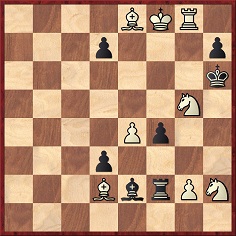
Edward Winter
‘One of the most extraordinary and fascinating chess books I have ever seen’ is how Gordon Pollard (Wallingford, England) describes Chess Cabala by Anthony Taffs in his Herald series article of 4 November 1982. We also quote the following from the column:
[Chess Cabala] ‘consists of 268 diagrammed problems composed by the author, Anthony Taffs. Many collections of problems have been published, but this one is unique; for, as the title suggests, these problems contain an extra something. In every one of them the pieces are arranged to form a letter or a figure. ... For more than a century composers have been attracted by the task of making problems with the men on the board forming letters or other meaningful shapes, and most have been satisfied with any sort of sound solution; anyone who has tried this sort of composition knows that it is difficult enough to get the pieces into the required shape, and the play itself usually has little merit. But that is not good enough for Taffs: he has shown repeatedly that arranging pieces on the board in definite shapes need not prevent the inclusion of interesting thematic ideas. Moreover, he will not countenance the use of “plugs” if they can possibly be avoided – that is pieces which are not necessary to render the problem sound but are added merely to complete the desired image. ... The letter problems are nearly all direct mate three-movers, and the author presents half-a-dozen or more settings for each letter of the alphabet. ... Taffs’ figure problems are even more amazing, for in each the number pictured indicates the length of the solution. A “7” problem, for example, which contains just seven pieces, has a solution in seven moves. His most recent production is a problem in which the pieces form “32” and the solution is in 32 moves.’

Mate in two
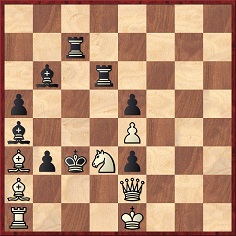
Mate in three
(303)
From page 153 of the May 1930 issue of The Gambit, which called Anthony Taffs ‘a young genius of chess’:
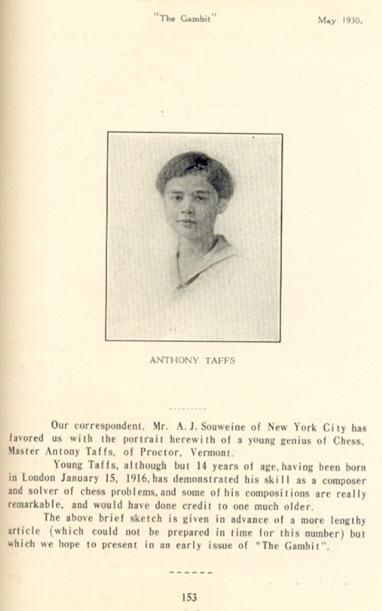
His 1981 book Chess Cabala was discussed in C.N. 303, and below we give a composition of his published on page 199 of The Gambit, July 1930:
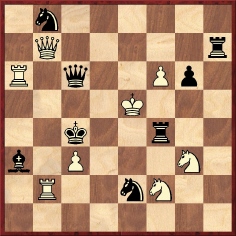
‘Composed for and dedicated to Mr A.J.
Souweine, New York.
The Four-fold Letter Problem Forms the Initials A.J.S.
Either White or Black mates or self-mates in two moves.’
(4181)
Michael McDowell (Newtownards, Northern Ireland) sends the following composition which, amazingly, combines five letters in one two-mover:
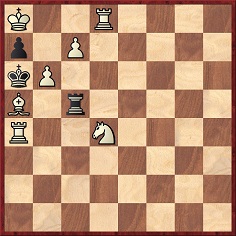
Mate in two
George Hume (after J. Bunting). Western Morning News and Mercury, 20 September 1924
‘Design’ Problem, Motto: ‘King Roars “Pawn ForwarD”’
An explanatory note was given by A.C. White in Changing Fashions, a collection of Hume’s problems which was the 1925 volume in the A.C.W. Christmas Series:
‘A very unusual fantasy, which the composer has called a design problem. The course of the solution presents five letters in perfect outline on the board, these corresponding to the initials of the words “King Roars ‘Pawn ForwarD’” and to the final letter of the sentence. This last letter of all is underlined, emphasizing the distinctness with which the king roared out his command.’
Solution: Diagram (K). 1 Rb8 (R) Rxa5 (P) 2 Pc8(Q) (F)
1...Rc4 2 Bb4 (D).
(684)
A mate-in-two position given in C.N. 11645 under the heading ‘An ingenious problem’:
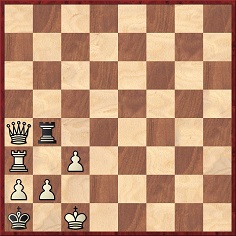
Mate in two
The solution was given in C.N. 11648:
1 Qc2 (threat: 2 Qb1 mate) 1...Rxb2 2 Qxb2 mate.
The problem was composed by Knud Hannemann to honour the fine performance of the Danish players in the first International Team Tournament (London, 1927). The four representatives of Denmark were Ruben, Andersen, Norman-Hansen and Krause, and the initial letters of their surnames are depicted in the course of the solution, i.e. beginning with R in the starting position. The composer’s own initials (forename and surname) also appear, and a particularly clever point is that in the case of Norman-Hansen the relevant position (after 1...Rxb2) can be read as both an N and an H:
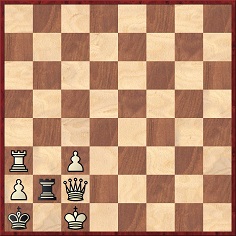
The composition, sent to us by Michael McDowell (Westcliff-on-sea, England), was published on page 112 of the Danish magazine Skakbladet, August 1927:
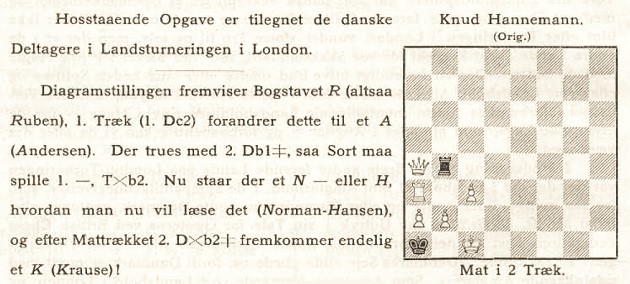
From page 109 of the same issue:
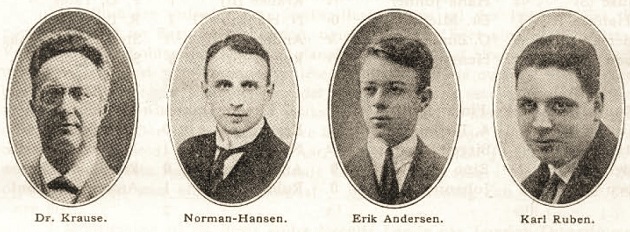
Issues of Skakbladet available online at the website of the Dansk Skak Union include the period 1924-39.
(11648)
From Avital Pilpel (Haifa, Israel):
‘Sometimes the depiction is not of a letter or number but an object. In Sivan 5684 (the Hebrew month equivalent to June 1924), Ha’shachmat Ha’shachmat – the magazine of the “Lasker” chess club in Jerusalem – published its first chess problems (volume one, number three, page 1). The very first of these problems was composed specifically for a Palestinian chess publication. Zionist sentiment is emphasized, and it is entitled “Star of David” and “dedicated to the revival of chess in our country” by the Jewish-Polish problemist Jakob Kopel Speiser.’


Problem four. Mate in two.
12019)
Michael McDowell writes:
‘The composition on pages 22-23 of A.C. White’s 1909 book Memories of My Chessboard (Stroud, 1909) remains one of my favourite letter problems, not least because there are no pieces used simply to fill in the shape. He was probably still 16 when he composed it.’


(12031)
To the Archives
for other feature articles.
Copyright Edward Winter. All rights reserved.